
 WIDEBAND POINT SOURCE
WIDEBAND POINT SOURCE
By employing a single wideband driver, the midrange and high frequencies are reproduced seamlessly, avoiding the time and phase errors associated with conventional multi-way loudspeaker designs, while also providing point source coherence.
 Isobaric Bass
Isobaric Bass
Dual 10 inch woofers driven in tandem enable the B300 to reproduce deep extended bass with exceptional authority. Capable of 17 Hz F3 anechoic.
 CLD Resonance Control
CLD Resonance Control
The enclosure utilizes Constrained Layer Damping(CLD) in its construction. Designed to damp unwanted resonance from the enclosure walls, preserving musical timbre, focus and accuracy.
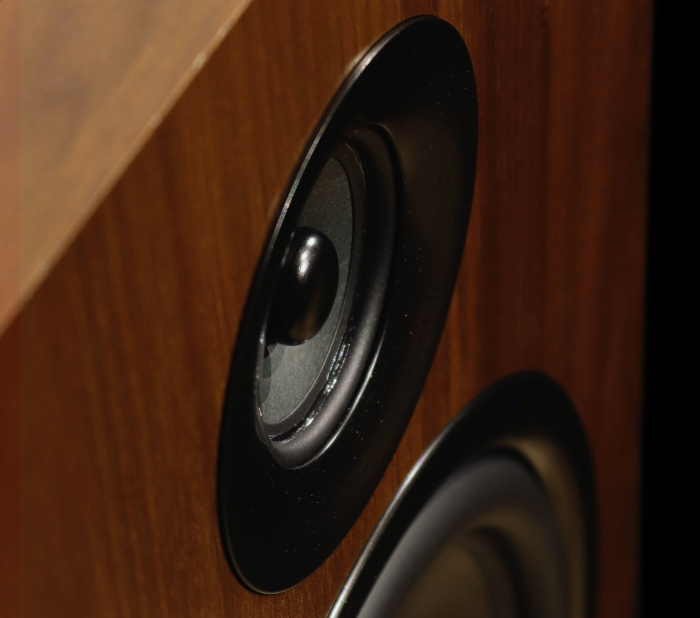
Wideband Point Source
Multi-way loudspeaker systems are prone to time and phase inaccuracies within the critical 1 kHz to 3 kHz frequency range. These anomalies are largely attributable to the division of mid and high frequency bands between multiple drivers, necessitating crossover networks operating within this sensitive region. Additionally, a significant exacerbating factor is the imperfect physical alignment of the multiple drivers. These elements introduce various acoustic artifacts, ultimately diminishing the connection between listener and the music.
The implementation of a single wideband driver, designed to encompass the entirety of the midrange and high-frequency bands, effectively eliminates these inherent issues. This approach also offers the advantage of a point-source radiation pattern. These characteristics are fundamental to the B300’s ability to deliver an exceptionally coherent performance and effortless musical connection.
Faster, Cleaner Midrange
Achieving a musically compelling performance requires careful attention to the midrange reproduction, which is considered by most to be the heart of the music. Mitigating any distortions in this area is essential. A significant source of midrange distortion in loudspeakers is residual oscillation, or stored energy, within the drive units. This effect is closely correlated to the driver’s moving mass; higher mass allows for a greater capacity for energy storage.
The B300’s wideband driver features an exceptionally low moving mass of 2.5 grams. A significant reduction in stored energy capacity when compared to the typical 6.5-inch midwoofer found in other 2-way stand mount loudspeakers, normally weighing 15-25 g. This translates to a faster, more accurate response to the input signal, marked by superior transient behavior and minimal residual oscillation. Ultimately resulting in cleaner and more convincing midrange reproduction.
Waveguide & Phase Plug
Optimized for maximal linearity and smooth dispersion, the wideband driver’s unique waveguide and phase plug were meticulously developed through extensive testing over numerous iterations.
Isobaric Bass
A pair of 10 inch woofers coupled by a small chamber, work in tandem as essentially one drive unit. This design methodology, known as Isobaric loading, allows for a 50% reduction in loudspeaker enclosure volume. Meaning the B300 achieves bass performance equal to that of a conventional single-driver enclosure twice its physical volume. The resulting low frequency extension and output significantly outperform conventional stand-mount loudspeaker designs.
The benifits of reducing loudspeaker enclosure size are not only practical, there are also acoustic advantages. Specifically, the minimized cabinet wall surface area inherently reduces resonance and reflections, which in turn enhances imaging and soundstage coherence.
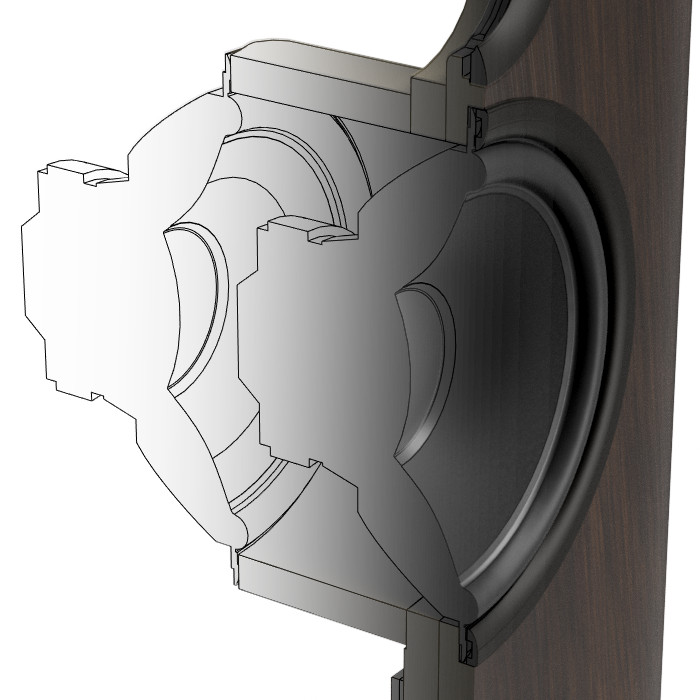
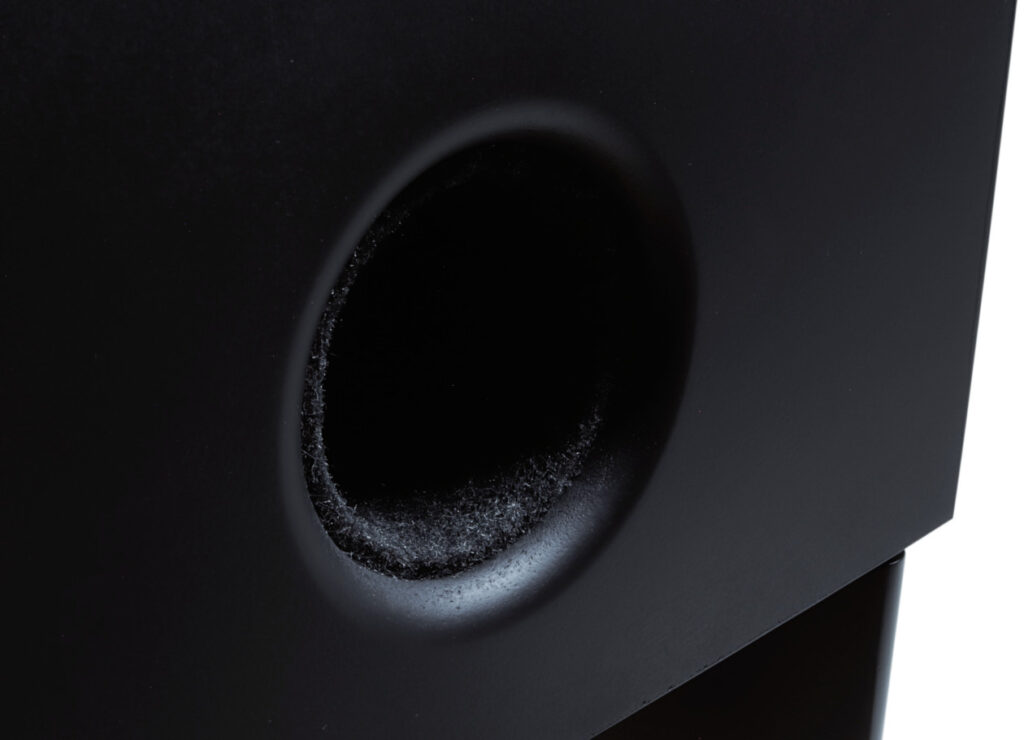
Tunable Bass Reflex
To optimize performance across diverse listening spaces and user preferences, the B300 incorporates a tunable bass reflex port. This feature allows for adjustment of the low-frequency balance – whether elevated, attenuated, or neutral – via the supplied port inserts.
CLD Resonance Control
Faithful musical reproduction is the foremost design objective at Sono Vera. A critical aspect of this pursuit involves mitigating spurious resonance generated by the loudspeaker enclosure itself. To this end, the B300 utilizes a resonance control method known as Constrained Layer Damping (CLD). This technique involves cabinet walls constructed with multiple layers, incorporating a central damping layer where vibrational energy is effectively converted into thermal energy. This rapid conversion suppresses resonance, preserving sonic accuracy, timbre and focus.

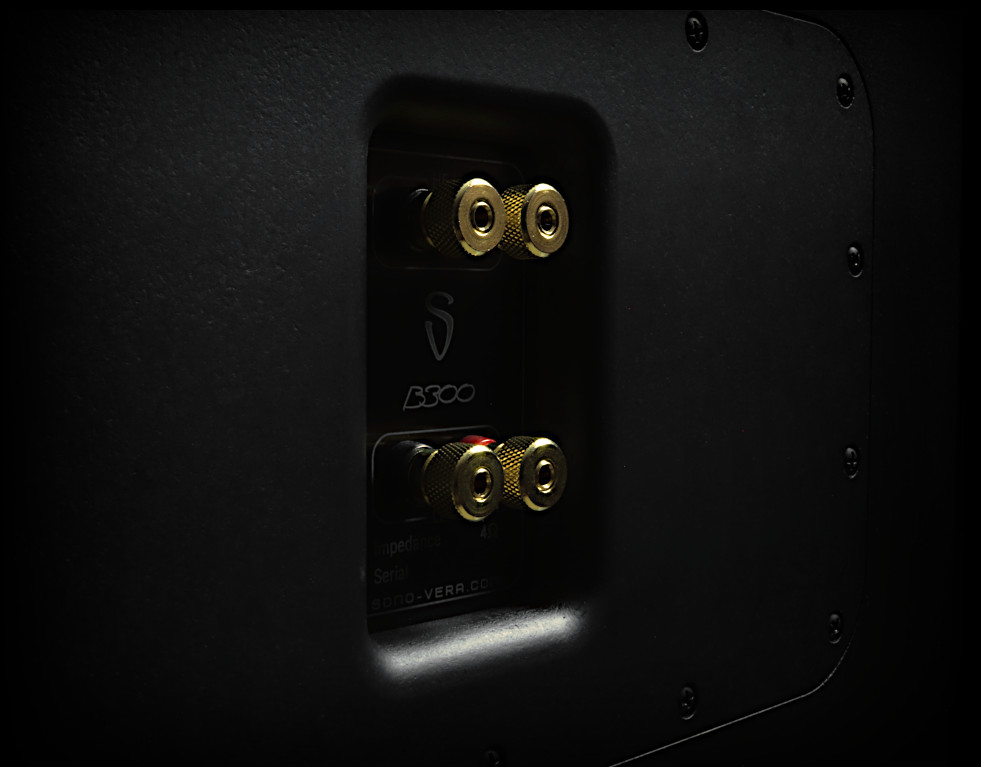
Bi-Amp ready
Separate connections for the wideband and woofer sections are incorporated to accommodate bi-amping. Where a single amplifier is preferred, the connections can be bridged using the supplied spade-to-banana links.
Low Loss Crossover
The internal crossover network features point-to-point wiring and utilizes high quality, non-ferromagnetic components, minimizing degradation and preserving the purity of the signal path.
Handcrafted cabinet
The B300’s enclosure is handcrafted in the USA. Prior to assembly, each individual section is precision CNC machine cut. It is then covered with plank-matched American Black Walnut veneer. Following careful preparation, the enclosure receives several coats of a custom-tinted instrument lacquer, culminating in a warm, vintage aesthetic that is smooth to the touch.
Solid cast urethane is utilized for the B300’s waveguide, phase plug, and trim components. These pieces can be produced in a variety of colors allowing for unique customization. All are magnetically mounted with exception of the phase plug, which is screw-on.

SM2 Isolation Stand
Not only an aesthetic compliment to the B300, the SM2 Isolation stand incorporates bespoke mounting isolators. These isolators effectively decouple the loudspeaker from the floor and stand by converting vibrational energy into thermal energy within the isolator itself. This rapid suppression of energy transfer enhances low-frequency resolution and overall clarity.
Effective Isolation
Loudspeaker isolation efficacy is determined via accelerometer-based vibration analysis conducted at the speaker’s mounting surface. The baseline noise floor, recorded by the accelerometer, is represented by the blue line. Any deviation from this baseline signifies resonant energy transferred from the loudspeaker to its mounting surface. Optimal isolation, representing 100% effectiveness, would yield a measurement that precisely tracks the noise floor. A comparative analysis, utilizing standard 1.5″ diameter by 0.25″ deep rubber isolator pads (orange trace) in place of the SM2 isolators (green trace), illustrates the latter’s superior performance.
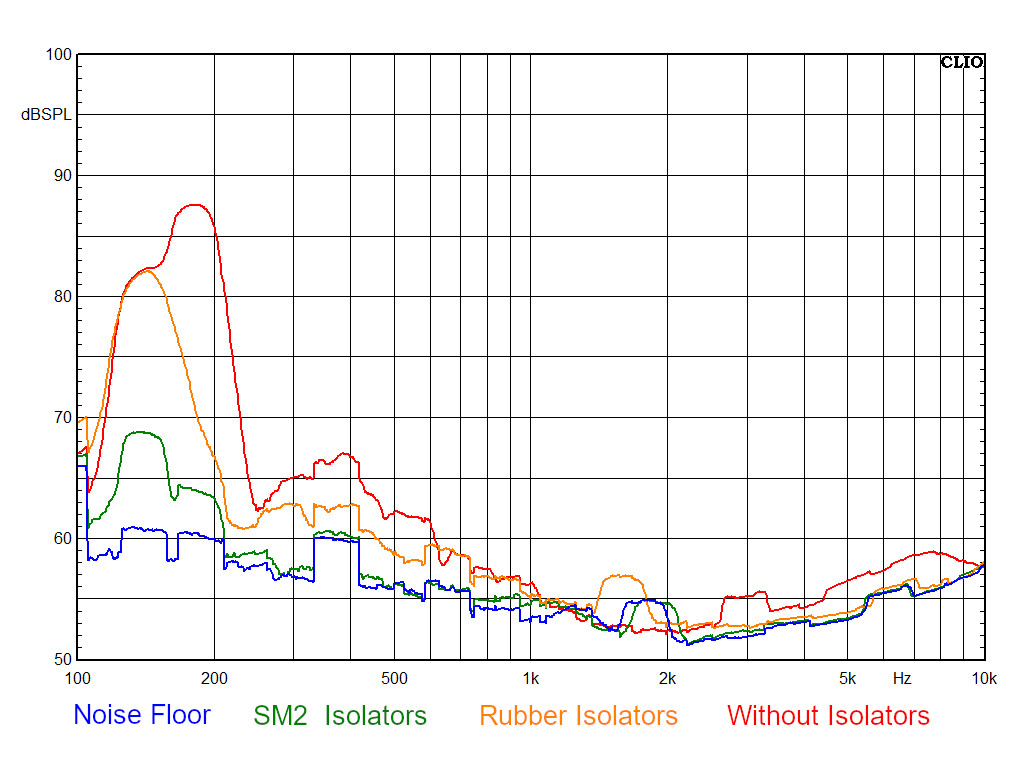
Measurements
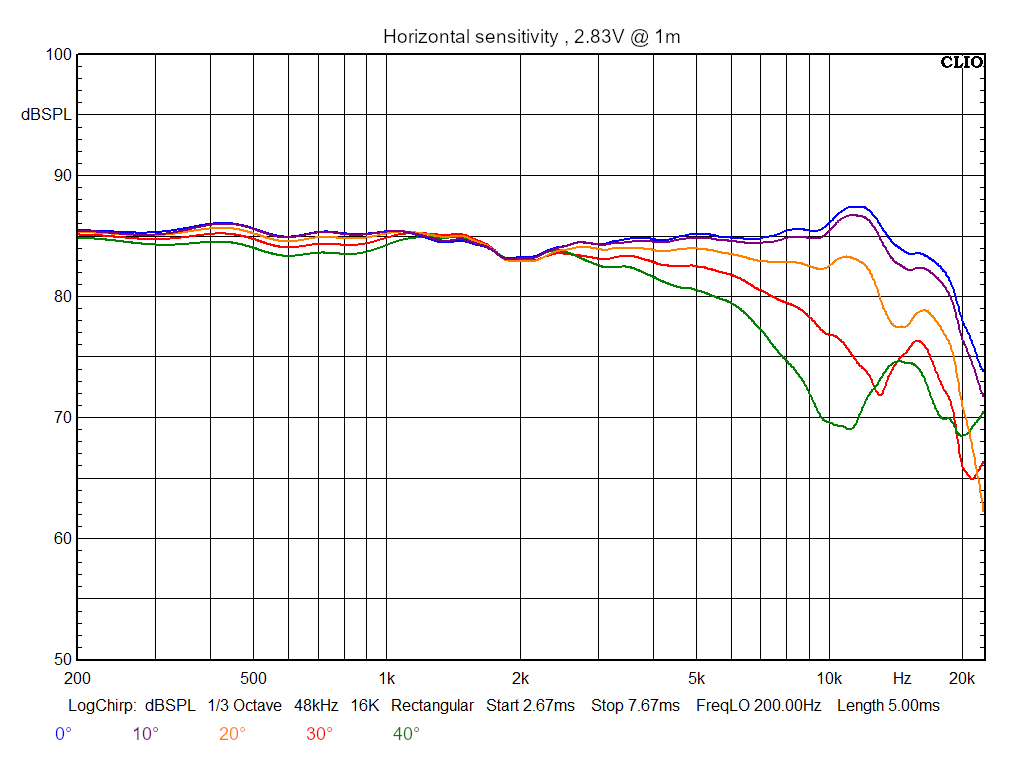
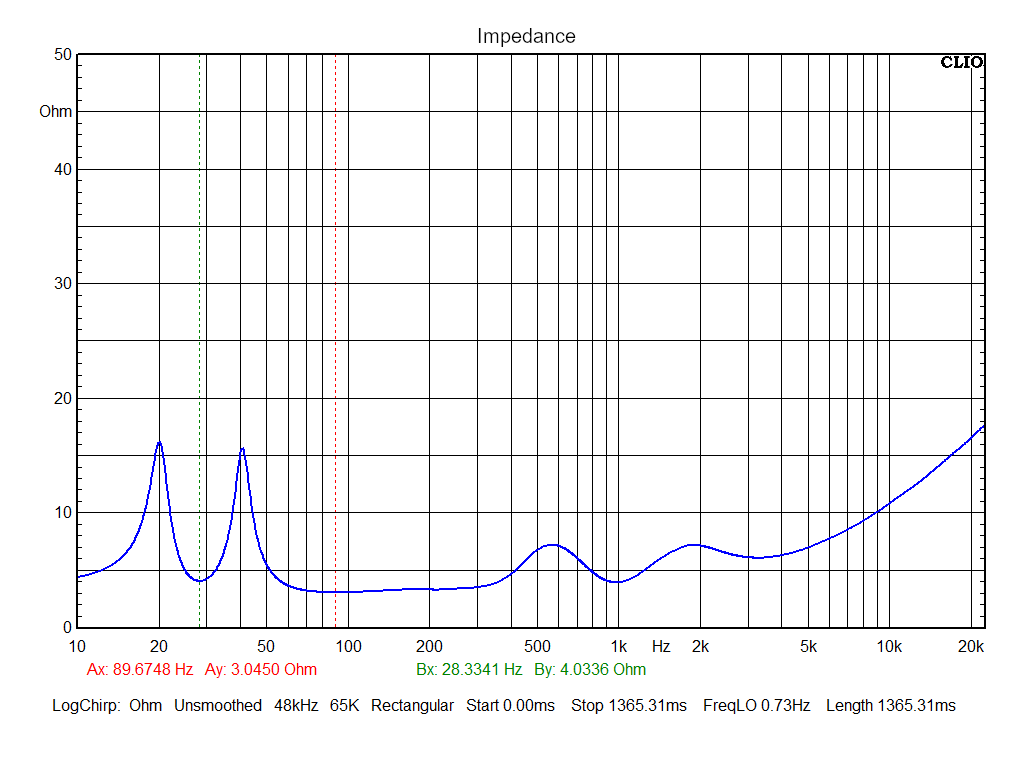
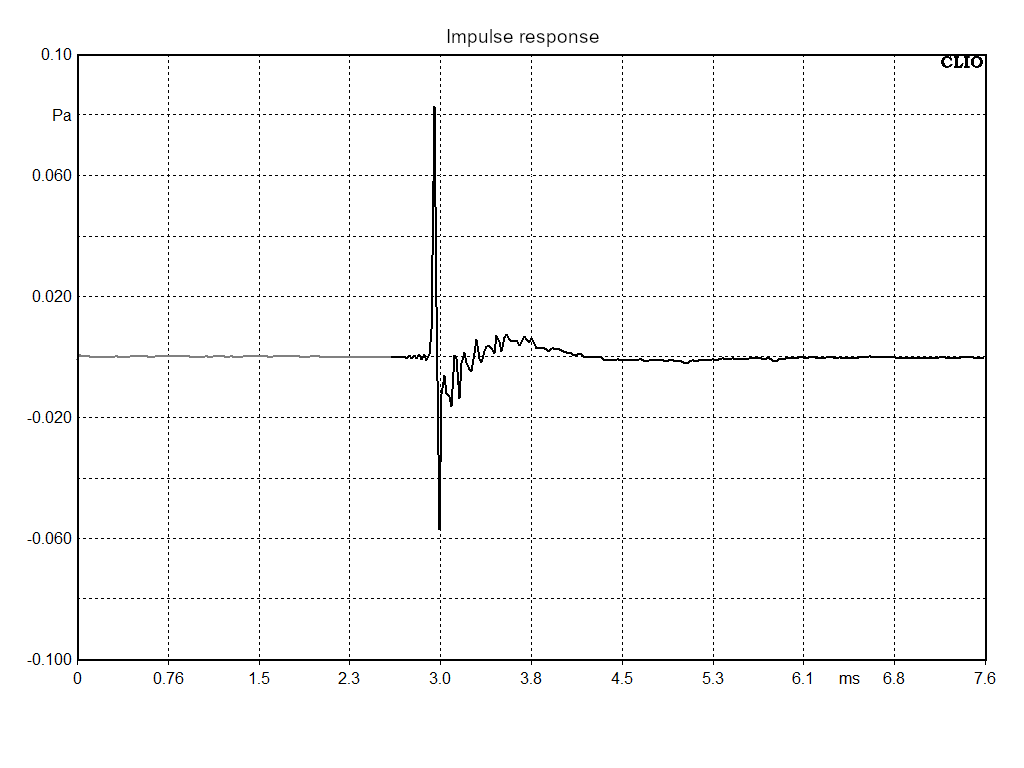
Technical Details
- Wideband Driver: 3 inch diameter
- Isobaric Woofers: 10 inch diameter
- Nominal Impedance: 4.0 Ohm
- Minimum Impedance: 3.0 Ohm @ 90 Hz
- Sensitivity: 86db 2.83V @ 1m
- Frequency Response: 17 Hz – 18 kHz anechoic
- Recommended Power Amplifier: 50-300W
- Dimensions: Height: 26″, Height including stand: 41″, Width: 16.25″, Depth: 14″
- Weight Per Speaker: 87 lbs
